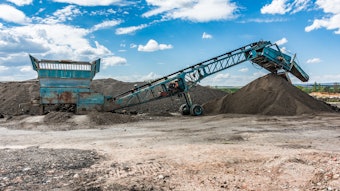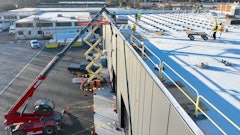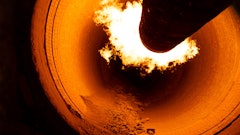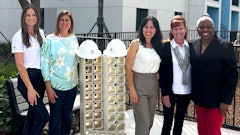University of British Columbia's Okanagan researchers Kasun Hewage and Fabricio Bianchini are taking a good idea and making it better, perhaps spawning a new construction technology for use in arid countries worldwide.
Hewage, an assistant professor of project and construction management in the School of Engineering at UBC's Okanagan campus, and his Master of Applied Science student Bianchini have been looking at ways to make green roofs even more environmentally friendly by using construction waste.
Green roofs - where plants are grown on specially designed matting that is placed on top of a building - are no longer a novel idea.
But there is room for improvement, and Hewage and Bianchini are looking at recycling waste building materials to form the base layers of a green roof.
Currently, materials for the layers are made out of plastic.
While the lifespan of a manufactured green roof is about 50 years, it takes 25 years to compensate for the environmental damage caused from making the plastics contained in the roof layering material.
Hewage and Bianchini are searching for the best type of construction waste to reduce the amount of plastic used in green-roof material.
Utilizing construction waste also reduces the amount of material that is dumped in local landfills.
Green construction is becoming a mantra throughout North America, and Bianchini says green roofs can play a role in reducing harm to the environment in several capacities.
Green roofs act as an insulator, meaning less energy is needed to heat a building in the winter and cool it in the summer.
"Plants regulate temperatures on Earth, so we are trying to apply that to buildings," says Bianchini.
But finding the best material is not the only challenge they face.
Hewage says the material must not be too heavy - plastic is light, thus making it a popular material - and it must not be too expensive to integrate into a building.
Construction projects produce many types of waste virtually from day one.
Hewage says once a type of waste is identified as the optimum material, it can be stored and used at the end of the construction project for green roof applications.
The project began last year, and Bianchini is monitoring several green-roof plant beds on campus that were donated by green-roof manufacturing company Xeroflor, which has taken an active interest in the project.
Bianchini will compare the results of the manufactured material against a green roof he constructed using discarded, crushed concrete as drainage material.
One of the key elements Bianchini will monitor is water runoff to see if contamination occurs from the construction waste.
"We want to use runoff water for irrigation, but if the water is contaminated, then it is no good," says Bianchini, adding when a suitable material is found, not only will that mean less landfill waste, but water consumption will also be reduced.
The Okanagan climate also plays a role in the research.
Research shows what works in Vancouver or Toronto may not necessarily work in more arid climates, so areas with similar climates around the world will benefit from the research being conducted at UBC, says Hewage.
"To have data from different places is very valuable," says Bianchini.
Bianchini will monitor the progress and results of the experiment for a full year, but both he and Hewage see possibilities for the research that could last for eons.
"Down the road, in many places we could install green roofs on buildings," says Hewage.
"Think of all the energy we are wasting. If you have a green roof, how much can you save?"
For instance, in another application, Bianchini says there are schools in the United States where students are growing vegetables on green roofs.
Leanne Bilodeau, director of Sustainability Operations for the Okanagan campus, says the project fits well with UBC's sustainability commitments in the university's Place and Promise plan and Sustainability Academic Strategy.
"Campus as a living lab is strongly supported by our Deputy Vice-Chancellor, Provost and Vice-Principal and Associate Vice-President, Administration and Finance," said Bilodeau.
"The idea is about incorporating operations, research and student projects on campus."
"The green roof project is one of the many ways we are enabling sustainability on campus," says Bilodeau, adding that the new Engineering, Management and Education Complex and Health Sciences Centre at UBC's Okanagan campus both incorporate green-roof technology and will be integrated into the campus' district energy geothermal system to reduce energy consumption and greenhouse gas emissions.
There are already spinoff benefits from the sustainability initiatives.
The Okanagan campus is partnering with the City of Kelowna on several projects, extending the 'campus as a living laboratory' concept into the community to help advance the region's collective sustainability goals.


![Img 1707[56]](https://img.forconstructionpros.com/files/base/acbm/fcp/image/2023/04/IMG_1707_56_.6437076c97961.png?auto=format%2Ccompress&fit=crop&h=191&q=70&rect=0%2C462%2C1920%2C1080&w=340)















![Glp Porsche 072723 465 64ee42287c29e[1]](https://img.forconstructionpros.com/files/base/acbm/fcp/image/2024/03/GLP_PORSCHE_072723_465.64ee42287c29e_1_.65e88b8589b9c.png?auto=format%2Ccompress&fit=crop&h=135&q=70&rect=0%2C520%2C2250%2C1266&w=240)








